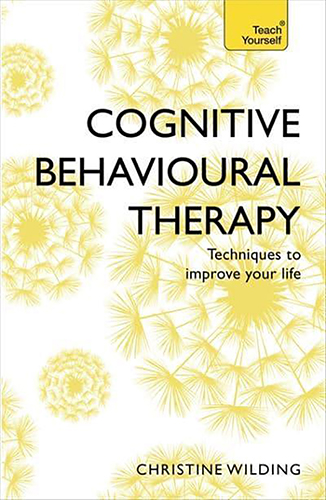
There are two reasons why as a psychoanalytically trained psychotherapist, I recently bought this book.
Long familiar with the popularity of CBT - touted as the only evidence-based therapy, as well as being a therapy particularly recommended for sufferers of anxiety and depression - I thought it would be useful to:
1) See why CBT is useful for such mental health issues and
2) Gain a quick and useful overview of techniques to use both personally and in my own clinical practice with certain clients.
“CBT as a therapy,” Wilding writes, “is very (very) precise”. The same could be said of this book. She has structured the content like a course you might take, precisely and succinctly, without sacrificing thoroughness, and this is a big strength.
The chapters are systematically laid out to guide you through each key concept and how they are used in practice, providing examples and case studies throughout to help clearly illustrate the point and summarising the learning at the end with a short explanation of how this leads us to the next chapter’s content.

Wilding outlines the basic premise of CBT as: what you think (the cognitive part) determines how you feel (both physically and emotionally), which affects what you do (the behavioural part). The book explains how our negative thoughts and perceptions of events affect our emotions and behaviours, often creating the vicious cycles that we witness in clinical depression and anxiety.
This book helps us understand that CBT is not about getting rid of negative thoughts, (trying to rid yourself of them paradoxically only serves to strengthen their frequency), instead it’s aim is to weaken the underlying core belief, so the thoughts have less power over us.
Wilding provides a useful overview of the main types of negative thought we encounter. She explains how powerful they are in getting us to believe them, how this in turn makes us feel anxious or depressed, and how we can support clients to re-evaluate these thoughts to reduce their potency. Rather than look for positive thoughts to replace the negative, CBT encourages us to look for alternative explanations.

The second half focuses on changing learned behaviours as well as symptom relief, through exercise, mindfulness, visualisation and exposure techniques. Wilding breaks these down into steps so that these can be readily put into practice. She also encourages to lean in with open curiosity to any existing coping strategies to assess whether short term symptom relief may be ultimately maintaining the problem. For example, does always using the stairs really help us with your lift phobia? We may feel less anxious in the short term, but the actual phobia of being in a lift persists and will never be challenged if we never face it.
Throughout this comprehensive book, we are offered in depth studies of low self-esteem, assertiveness, phobias, anxiety and depression and how CBT can be employed to help clients overcome these issues. The author also helpfully acknowledges some of the limitations of the model, recognising that some clients will have difficulty getting on board with the written homework or may not feel comfortable with such a structured approach.
Wilding counsels us to remember that if you don’t use it, you will lose it. CBT processes and techniques really must be practiced over and over again long after your therapy treatment ends, otherwise you ‘forget’ and the same habits of thought and behaviour resurface. Of course, whatever we learn in any kind of counselling and therapy must be used or put into practice in our real lives in order to stick, so this is not a criticism as such, but it is a truism that we as therapists must acknowledge.
This book really is an excellent introduction and practical primer to CBT that is accessible to anyone who has an interest in tackling mental health in this way.
Although CBT is not my main therapeutic model, I have found this book invaluable in supporting clients who, because either we’ve reached an impasse, or an issue has become pressing, require a more targeted and tangible approach.
